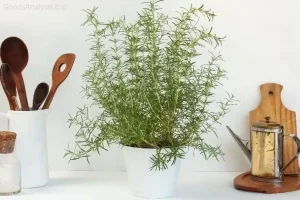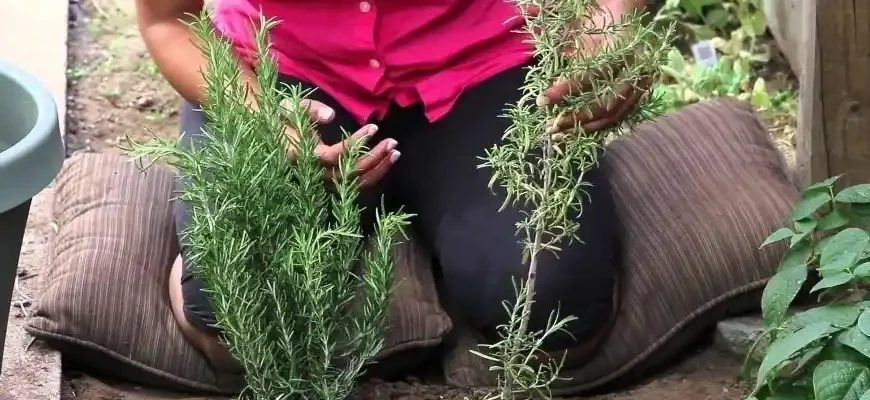If you’ve ever dreamed of having fresh rosemary at your fingertips every time you cook, growing it indoors is a great way to make that dream a reality. Rosemary, with its fragrant needles and flavorful leaves, can thrive inside with a little attention and the right conditions. Whether you’re new to gardening or an experienced plant parent, this guide will walk you through everything you need to know to grow rosemary successfully indoors.
Why Grow Rosemary Indoors?
There are plenty of reasons to grow rosemary indoors, but one of the main ones is convenience. Imagine reaching for fresh rosemary while you cook, without needing to run to the store or wait for the next farmers’ market. Plus, indoor rosemary plants can be grown year-round, providing fresh herbs even during the cold winter months when outdoor gardening may not be an option.
Additionally, rosemary is not just tasty; it’s packed with essential oils and antioxidants. Some studies even suggest that the scent of rosemary can improve memory and cognitive function—an added bonus for your health and well-being!
Understanding Rosemary’s Needs
Before diving into the how-to’s of growing rosemary indoors, it’s important to understand what this herb needs to thrive. Rosemary is a Mediterranean native, so it’s accustomed to hot, dry climates and plenty of sunshine. While it’s not the fussiest of plants, providing the right environment will make a world of difference.
- Light: Rosemary is a sun-loving plant, and it needs about 6 to 8 hours of direct sunlight each day. The more light you can give it, the better. A south- or west-facing window is ideal. If your home doesn’t get that much natural light, you might want to invest in a grow light. These simulate the sunlight rosemary craves and will help keep it healthy.
- Temperature: Rosemary likes warmth. Aim for temperatures between 60°F and 75°F (15°C to 24°C). Avoid placing your rosemary near cold drafts, heaters, or air conditioners, as extreme fluctuations in temperature can stress the plant.
- Watering: Rosemary is quite drought-tolerant but hates to sit in soggy soil. Water your plant when the top inch of soil feels dry to the touch, but make sure the pot has good drainage to prevent root rot. On average, you might water rosemary once every 5-7 days, but this will depend on the temperature and humidity levels in your home.
- Humidity: Rosemary doesn’t need high humidity to grow well, which makes it perfect for indoor environments. However, if the air in your home is particularly dry (especially in winter), you may want to mist the leaves occasionally or place the plant on a tray of pebbles with water to increase the moisture around it.
How to Pot and Care for Indoor Rosemary
Now that you understand rosemary’s basic needs, let’s talk about how to pot and care for your plant.
- Choosing the Right Pot: The pot should have good drainage holes to prevent water from collecting at the bottom. A terracotta or clay pot is ideal because it allows moisture to evaporate through the sides, which helps prevent overwatering. Make sure the pot is big enough to accommodate the rosemary’s roots but not so large that the plant gets waterlogged.
- Soil: Rosemary prefers well-drained, slightly sandy soil. A cactus or succulent mix works well, or you can mix your own using equal parts of potting soil, perlite, and sand. You’ll want to avoid heavy, clayey soils, as they hold too much moisture and can cause root rot.
- Fertilizing: Rosemary is not a heavy feeder, so you don’t need to fertilize it often. A light application of a balanced, water-soluble fertilizer every 4-6 weeks during the growing season (spring through summer) is sufficient. Avoid fertilizing in the fall and winter when the plant is less active.
- Pruning: Regular pruning is key to keeping your rosemary bushy and healthy. Pinch back the tips of the plant regularly to encourage new growth. You can also remove any dead or yellowing stems. Be sure to leave the main stem intact to allow the plant to grow vertically.
Common Problems with Indoor Rosemary
No plant is completely trouble-free, and while rosemary is relatively low-maintenance, it can have a few hiccups along the way. Let’s look at some common issues and how to address them.

- Yellowing Leaves: This is usually a sign of overwatering. Rosemary prefers to dry out a bit between waterings, so let the soil dry thoroughly before watering again. If you notice the leaves turning yellow or brown, trim them off to keep the plant looking its best.
- Leggy Growth: If your rosemary is growing tall and spindly instead of bushy, it may not be getting enough light. Try moving it to a sunnier spot or adding a grow light.
- Pests: While rosemary is relatively pest-resistant, it can occasionally attract aphids, spider mites, or whiteflies. If you spot any pests, gently wipe the leaves with a damp cloth or use an insecticidal soap. Be careful not to overdo it, as rosemary is sensitive to chemicals.
- Root Rot: If the soil is too soggy and the pot doesn’t drain well, you risk root rot. Make sure your rosemary pot has proper drainage, and if you think root rot has set in, repot the plant in fresh, well-draining soil.
Harvesting and Using Your Rosemary
Once your rosemary plant is established and healthy, it’s time to start using those fragrant, flavorful leaves! You can harvest rosemary throughout the growing season by snipping off sprigs as needed. Always cut just above a leaf node (where the leaves meet the stem) to encourage new growth.
Rosemary is perfect for seasoning meats, vegetables, and soups. It can also be used to infuse oils, make teas, or even as a fragrant addition to homemade candles or potpourri.
Tips and Tricks for Success
- Air Circulation: Rosemary appreciates a bit of air movement, so if you live in a humid environment, consider using a fan near the plant to keep the air circulating. Just don’t place the fan directly on the plant, as that can dry it out.
- Don’t Overcrowd: Rosemary needs space to breathe and grow. Avoid placing it next to other large plants, as they can block light and restrict airflow.
- Repotting: Rosemary doesn’t need frequent repotting, but if it starts outgrowing its pot, it’s time for a new home. Repot your plant every 2-3 years or when the roots begin to outgrow the pot.
Real Opinions from Rosemary Growers
- Maria (45, Italy): “I’ve been growing rosemary indoors for years, and it’s one of the easiest herbs to care for. I put mine by a sunny window, and it does great year-round. The only challenge is making sure it doesn’t get too much water, especially during winter.”
- Carlos (52, USA): “I’m always amazed at how much flavor fresh rosemary adds to dishes. Growing it indoors is a no-brainer for me. Just make sure it gets enough sunlight, or it starts getting leggy. I’ve also had success with grow lights during the winter.”
- Nina (60, UK): “My rosemary plant has been with me for over 5 years. I’m a firm believer in letting the plant dry out a bit between waterings. If you’re growing it indoors, remember that it loves sunlight, so it’s worth putting it in the brightest spot of your home.”
- Amira (37, Egypt): “Living in a dry climate, rosemary thrives in my home, but I had to learn the hard way about overwatering. I’ve found that if I let the soil dry out completely between waterings, it does much better.”
- Kenji (50, Japan): “I’ve grown rosemary for cooking for years, but I was hesitant to grow it indoors because I wasn’t sure it would get enough light. After switching to a grow light, my plant flourished. It’s now a part of my kitchen garden.”
Growing rosemary indoors can be an immensely rewarding experience. With just a little care and attention to its light, water, and temperature needs, you can enjoy fresh rosemary all year long. Remember to be patient, as plants grow at their own pace. Happy gardening!









